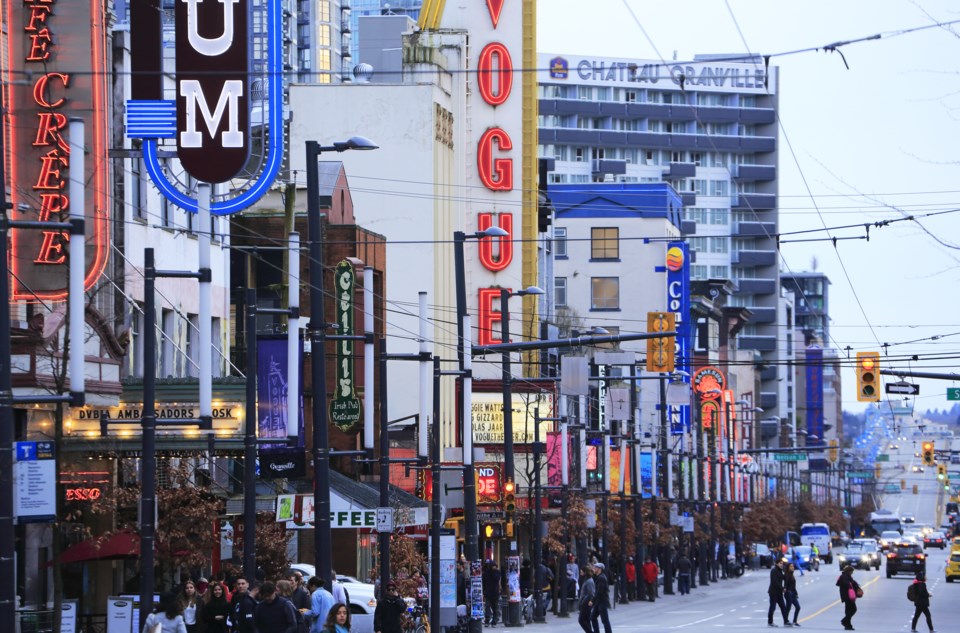Vancouver is ranked 47 out of 63 cities across North America for recovery in its downtown core following the height of the pandemic, according to a new study from the University of Toronto.
Despite its low ranking, Vancouver’s downtown remains the most densely populated downtown core in Canada, making up five per cent of the total population of the Vancouver region, according to the Downtown Vancouver Business Improvement Association’s (DVBIA) State of Downtown 2023 report.
Cities such as Quebec City, Edmonton, Winnipeg and Ottawa received higher rankings than Vancouver when it comes to downtown recovery. However, Vancouver ranked higher than Calgary, Toronto and Montreal.
These rankings are based on cellphone data that compares movement and activity in a particular city to its pre-pandemic levels, meaning the data is relative to each individual city, rather than comparing cities to each other, according to Amir Forouhar, a Postdoctoral Fellow at the University of Toronto and one of the researchers on the study.
“We compared the level of activity in 2022 with the level of activity in 2019 and the ranks and percentage of recovery rates shows how much they recovered compared to the pre-pandemic,” he said.
The study’s main goal was to analyze the recovery trajectories of major North American cities, in addition to understanding if there is impending “death of downtowns.”
“A lively debate is emerging about whether the pandemic will lead to a full blown, 1970s-style urban crisis or more of the adaptive bounce back we saw in many downtowns after the Great Recession,” the study said.
Overall, the data showed that downtown cores, Vancouver included, are recovering at a slower pace than the rest of the city. In addition, Canadian cities experienced less recovery than those in the U.S. Larger cities, such as Vancouver and Toronto, showed slower recovery rates than medium-sized cities.
This is partly attributed to the longer lockdown times that Canada put in place, said Jeff Allen, a cartographer and urban data scientist who also participated in the study.
Higher retail and office vacancy rates helped keep foot traffic below pre-pandemic levels in much of downtown Vancouver last year, according to DVBIA. This is mirrored in the study, according to Allen.
“A lot of office buildings are now going underused. So there does feel like there's a lot less activity,” he said, adding that this can encourage cities to get creative regarding the way these vacant spaces are used.
“It shows that there's a lot of potential to revamp a lot of these downtown spaces that were once maybe just offices and could be put towards other uses, like residences or more community uses and things like that.”
The study highlights that more research is needed in the long-term to understand the impact of the pandemic on downtown cores. Forouhar is currently working on a study that analyzes the rate of recovery in transit-oriented communities compared to those that have less transit access, he said. The results of that study will be released in the coming months.






